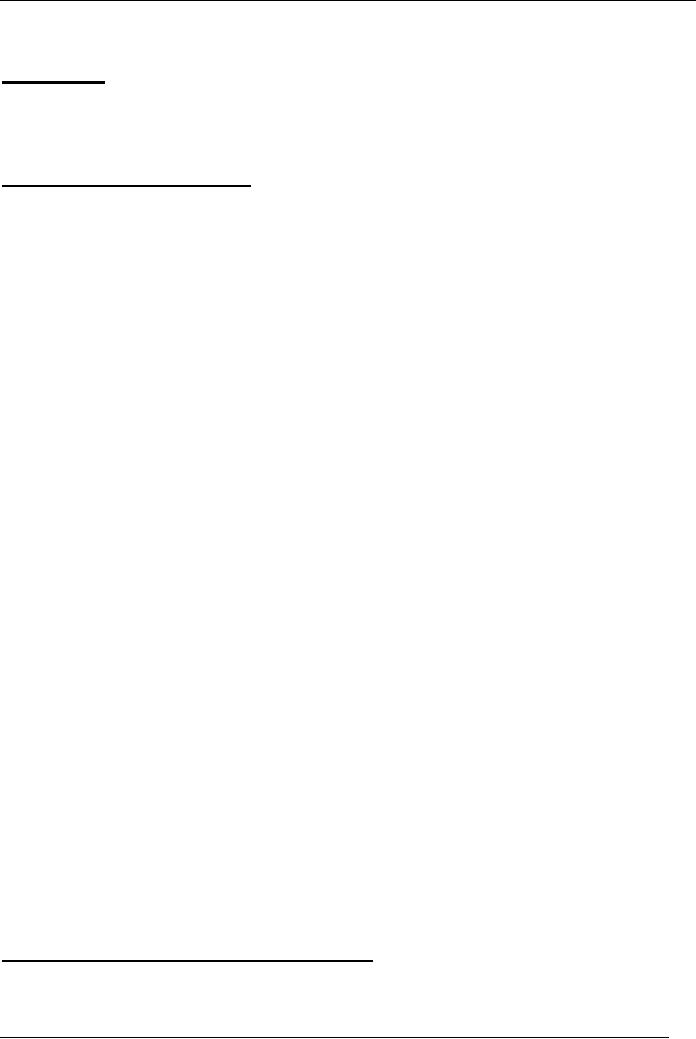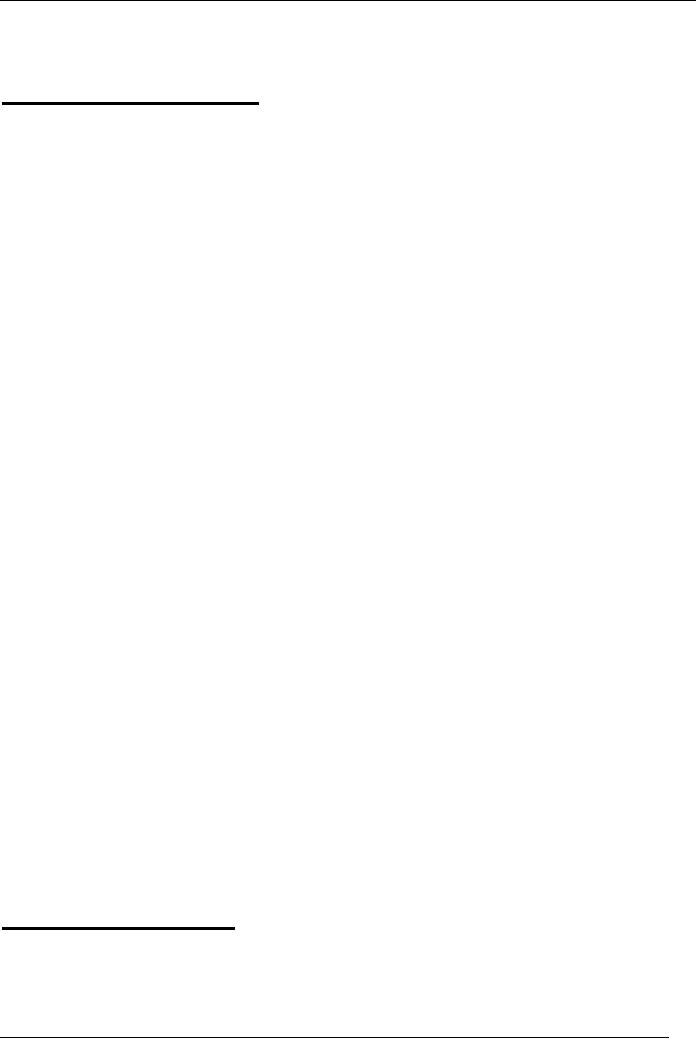 |

Advertising
and Promotion (MKT621)
VU
Lesson
36
OTHER
ADVERTISING MEDIA
OVERVIEW
This
lecture will introduce the
students with other
important advertising media such as
point of
purchase,
billboards, transit advertising and
the few advertising
specialty. Besides this
the
constraints
of advertising power because of
practical limitations will be explained
in detail.
POINT
OF PURCHASE (POP):
Point
of purchase is used to call the
attention to your products or services
right at the location
of
sale.
Who
should use POP?
It
can be used by retailers for
their own use or by
manufacturers for the retail
outlets and for
introducing
sales promotion e.g. contest,
game etc.
Advantages:
Following
are the advantages of Point
of Purchase materials
�
Very
visible Ideal for
introducing new
product.
�
Convey
positioning
�
For
introducing sales promotion e.g.
contest, game etc.
Disadvantages:
Despite
having advantages point of purchase
material have certain disadvantages as
under:
�
Easily
Diluted by so many
displays.
�
If
you are a manufacturer
cannot be always sure your
retailers will use the
displays you
provide.
�
May
not be properly
displayed.
�
Inexpensive
to produce.
Cost
of POP:
This
varies depending upon
quantities & design.
Types
of POP:
Following
are four major
types:
1.
Table tents: Free standing
tents made of heavy paper
for restaurants for menus
etc.
2.
Shelf talkers: Cards on
shelves etc.
3.
Countertops: Free standing
cards for banks.
4.
Display Racks: For retail,
grocery to feature certain
items.
Tips
for Using POP:
All
types of POP have two
basic rules which you
should follow as
under:
a.
Keep
the message simple: Use
large size headline oriented
message.
b.
Use
Effective color: Use sharp colors as
these are grabbers.
BILL
BOARDS (OUTDOOR
ADVERTISING):
As
is visible in almost all
urban areas out door
advertising (billboards) are
used now a days
very
extensively as an effective advertising
medium.
108

Advertising
and Promotion (MKT621)
VU
Who
should use Outdoor
Advertising?
The
outdoor advertising can be useful
for following business as
their target audiences
are
located
in one geographical area.
�
Retail
businesses.
�
Service
businesses.
�
Event
promoters.
Cost
of Outdoor Advertising:
Depends
upon type, street or road
location.
Types
of Billboards:
Posters
(Pre
printed sheets): Mass produced so buy
many boards. These are screen
printed.
Painted
Bulletins: Larger
than posters. These are giant boards.
Much more expensive
than
posters.
Electronic
Boards: Video,
computer & projection aided
boards.
Tips
on Using Billboards:
Following
are the important tips to be
kept in mind for using
billboards effectively:
�
Keep
both copy and visuals
simple: Viewers are seeing
boards from distance and may
be
driving
past it rapidly.
�
Keep
type as large as possible: A 2
feet high letters are
read from a distance of 840
feet.
�
Use
simple typefaces & simple
graphics.
�
Color
selection is very
critical.
�
Experiment
how your Artwork will look
from distance.
TRANSIT
ADVERTISING:
The
most common form of transit
advertising are large signs on
outside & inside of
vehicles
buses,
subway trains, cable cars ,
trains, taxis and other
moving vehicles.
Who
should use:
�
Retail
or service businesses.
�
Event
promoters.
�
Whose
target is one urban
area.
Preparing
Artwork:
Following
rules should be kept in mind
while preparing the artwork
for transit
advertising:
�
Viewing
area should be smaller than
actual sign
dimensions.
�
Artwork
similar to Bill Boards
needed.
�
Screen
printing is ideal.
�
Brief
copy & bold design parameters be
used.
Tips
for Using
Transit:
Following
are few tips for
using transit advertising
effectively:
�
Same
like billboards.
�
Exterior
signs require boldness &
simplicity.
�
Interior
ads too should not be
overloaded.
109

Advertising
and Promotion (MKT621)
VU
Cost
of Transit Advertising:
Varies
as it is done in different sizes and the
cost will also be different from location
to
location.
ADVERTISING
SPECIALTIES:
Give
away Items like pens,
key rings, diaries calendars, and paper
weights etc. can be
classified
as
advertising specialties.
Who
Should Use:
Almost
any business can use
this.
Cost
of Advertising Specialties:
Anywhere
from few Rupees to thousands
depending upon quantity,
quality and complexity.
Advantages:
Following
are the advantages of using
advertising specialties:
�
Customers
consider these as gifts
rather than
advertising.
�
Used
day in and day out.
�
Highly
visible items, turning
customers as walking
advertisements.
�
Vast
variety & customized options
available.
Disadvantages:
Despite
being advantageous advertising specialty
can have following disadvantages:
�
Many
are cheap, create bad
impression.
�
Can be
expensive and difficult to
distribute.
�
High
quality specialties can cost a
lot.
How
to Select Right Ad Specialty:
Following
methods can help you to select
the right ad
specialty:
�
Discuss
with Sales Rep of
Company.
�
Keep
budget in mind.
�
Keep
Deadlines in mind.
�
For
smaller clients select something
unique.
�
Choose
item which supports your
positioning.
�
Choose
item which will be kept &
used.
�
Choose
item which the competitor
will not send to your
target.
Can
Ad Specialty Items Be Sold?
Yes
you can do that! - If following
factors apply:
1.
You have a young target
audience.
2.
Selected item is something
truly desirable.
3.
Your product or business has
some status or group identity to
it.
LIMITS
OF ADVERTISING:
Often
advertising power is constrained as
much by practical limitations as by
absolute
limitations.
Following factors play an
important role in determining
the constraints of
advertising.
110

Advertising
and Promotion (MKT621)
VU
1.
Competitor's
Advertising
�
Activity
of competitors.
�
Several
advertisers of same product
category.
�
Level
& frequency of competitor's
advertising.
2.
Limitations
of Budget
�
High
cost for longer time
advertisements.
�
More
cost when a product is not
unique.
3.
Creating
"Needs"
�
People
feel being
manipulated.
�
Feel
being forced to buy even
without need.
�
People
criticize the persuasive
role.
4.
Accelerates
Mass Markets
�
Expands
markets
�
Creates
interest in buying
innovation.
�
Makes
product more
available.
�
First
introduces product &then
affordability.
5.
For
Brands or for Products
�
Makes
people buy one brand instead of
another.
�
Create
demand by brand advertising yet is
not conclusive.
6.
Resistance
to Change
�
Generally
people resist to changes.
�
People
reject inconsistent with
their present mindset.
7.
Advertising
is the Weaker Influence
�
Message
can fail if inconsistent &
incredible.
�
May
lead to a wrong decision & people may
change back.
8.
Ads
That Work or That Win
Awards
�
More
important to help in
sales.
�
Marketing
research essential for
evaluation.
111
Table of Contents:
- INTRODUCTION TO ADVERTISING:Its growing importance, Explanation of Personal and non-personal selling
- INTRODUCTION TO ADVERTISING:ADVANTAGES, Communication, Information, Various Media
- INTRODUCTION TO ADVERTISING:FUNCTIONS OF ADVERTISING, IMPACT OF ADVERTISING
- ADVERTISING AND SOCIETY:PRACTICAL BENEFITS, ETHICS IN ADVERTISING, Marketplace & Market space
- MARKETING TOOLS:COMPONENTS OF MARKETING MIX, PRODUCT LIFE CYCLE (PLC) CURVE
- MARKETING TOOLS:SWOT Analysis, Contents & Structure, ROLE & FUNCTION OF ADVERTISING
- ROLE AND FUNCTIONS OF ADVERTISING:Structure of an Advertising Agency, How to Select an Advertising Agency
- ADVERTISING PLANNING:ADVERTISING OBJECTIVES, Types of Advertising, Positioning Strategies
- POSITIONING:BRANDING, 7 Steps of Creative Process, UNIVERSAL ADVERTISING STANDARDS
- ADVERTISING MESSAGE:Message Content, BASIC TERMS & CONCEPTS
- ADVERTISING BUDGET:4 Methods to determine, ADVERTISING RESEARCH, ADVERTISING RESEARCH
- ADVERTISING REACH:BROAD COMMUNICATION OBJECTIVES, ADVERTISING COPY METHODS, MEDIA RESEARCH
- PRE – PLACEMENT EVALUATION:ACCOUNT PLANNING, MARKET, COMPETITION
- WORKING OF ADVERTISING:12 Steps to develop effective campaign, SOURCE or THE ADVERTISER
- ADVERTISING RESPONSE HIERARCHY MODELS:AIDA MODEL, PROCESS REQUIRED TO GET BIG IDEA
- PROBLEM SOLVING STRATEGIES:Procedure to Handle Problems, In brief, Eight principles apply to consumer behavior
- CONSUMER BEHAVIOUR:ADVERTISING APEALS, MEDIA MIX DECISIONS, Target Rating Point (TRP)
- CREATIVITY IN ADVERTISING:Three aspects are most accepted, Four Rules of Creativity
- COPY WRITER:CHARACTERISTICS OF COPYWRITER, IMPORTANCE OF LANGUAGE
- WHY ADVERTISING:Advertising & Market Education, ADVERTISEMENT CAMPAIGNS
- METHODS TO APPRECIATE A PROBLEM:SPONSORSHIP—an important tool, Special Characteristics
- IMPORTANT TOOL OF ADVERTISING:TELEVISION ADVERTISING, TRANSIT ADVERTISING
- ONLINE ADVERTISING:Banners, Logos, Email Ads, Keywords on Search Engines, New Developments
- ONLINE ADVERTISING:Structural Challenges, Adobe Photoshop, JAVA, HTML, DHTML, ASP & JSP
- SALES PROMOTION:Consumer Oriented Promotion, HOW TO USE TRADE PROMOTION, Dealing with the Trade
- PUBLICITY:PERSONAL SELLING, ROLE OF SALES PERSON, FUTURE OF GLOBAL ADVERTISING
- MARKETING ENVIRONMENT:Competitors, The Target Buyer, Segmenting your Market, FUTURE OF MARKET GROWTH
- MARKETING PLAN:Situational Analysis, Macro – Environment Situation, Marketing Objectives, Financial Objectives
- MARKETING PLAN:PROMOTING BUSINESS IN LOW COST, SUPPLY CHAIN, BUYER IDENTIFICATION
- HOW TO BE GOOD CLIENTS:CHANNEL BUYERS, HOW TO BE GOOD CLIENTS 14 RULES
- CLIENT – AGENCY RELATIONSHIP:HOW TO KEEP CLIENTS (10 Ways), Three Points for Consideration
- CLIENT – AGENCY RELATIONSHIP:ADVERTISING WITHOUT AN AGENCY, LOGO AND CORPORATE IDENTITY
- NEWSPAPER ADVERTISING:AD PRODUCTION,TYPES OF NEWSPAPER ADS, CIRCULATION
- OTHER ADVERTISING MEDIUM:HOW TO USE MAGAZINES, HOW TO USE RADIO, Daypart buying options
- UTILITY OF VARIOUS MEDIA:TAPE OR FILM, UTILITY OF TV, DIRECT MAIL PACKAGE
- OTHER ADVERTISING MEDIA:POINT OF PURCHASE (POP), TRANSIT ADVERTISING, LIMITS OF ADVERTISING
- CONTINUOUS TRACKING:PLANNING CAMPAIGN, HOW TO UNDERSTAND ADS, ASK BASIC QUESTIONS
- SEASONAL ADVERTISING:MAXIMIZING IMPACT, THE WEB ADVERTISING, MEASURING ADVERTISING
- COMPONENTS OF ADVERTISING:BUY - OLOGY OF MIND, BUY - OLOGY OF MIND
- CRITICISM ON ADVERTISING:SHOULD ADVERTISING BE ABOLISHED,
- EFFECT OF ADVERTISING:HOW TO PROMPT AWARENESS, CREATING DESIGN THAT SELLS
- CREATING EFFECTIVE DESIGN:LANGUAGE OF TYPOGRAPHY, HEADLINES THAT COMMUNICATE
- WORKSHEETS:DEMOGRAPHICS OF YOUR TARGET, YOUR COMPETITOR
- GLOSSARY OF ADVERTISING:ACCOUNT EXECUTIVE, PROOF, VOICE OVER
- CONCEPT OF AN AD:HOW TO DEVELOP A CONCEPT OF AN AD